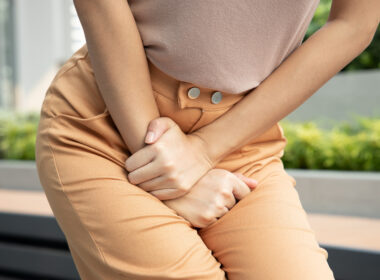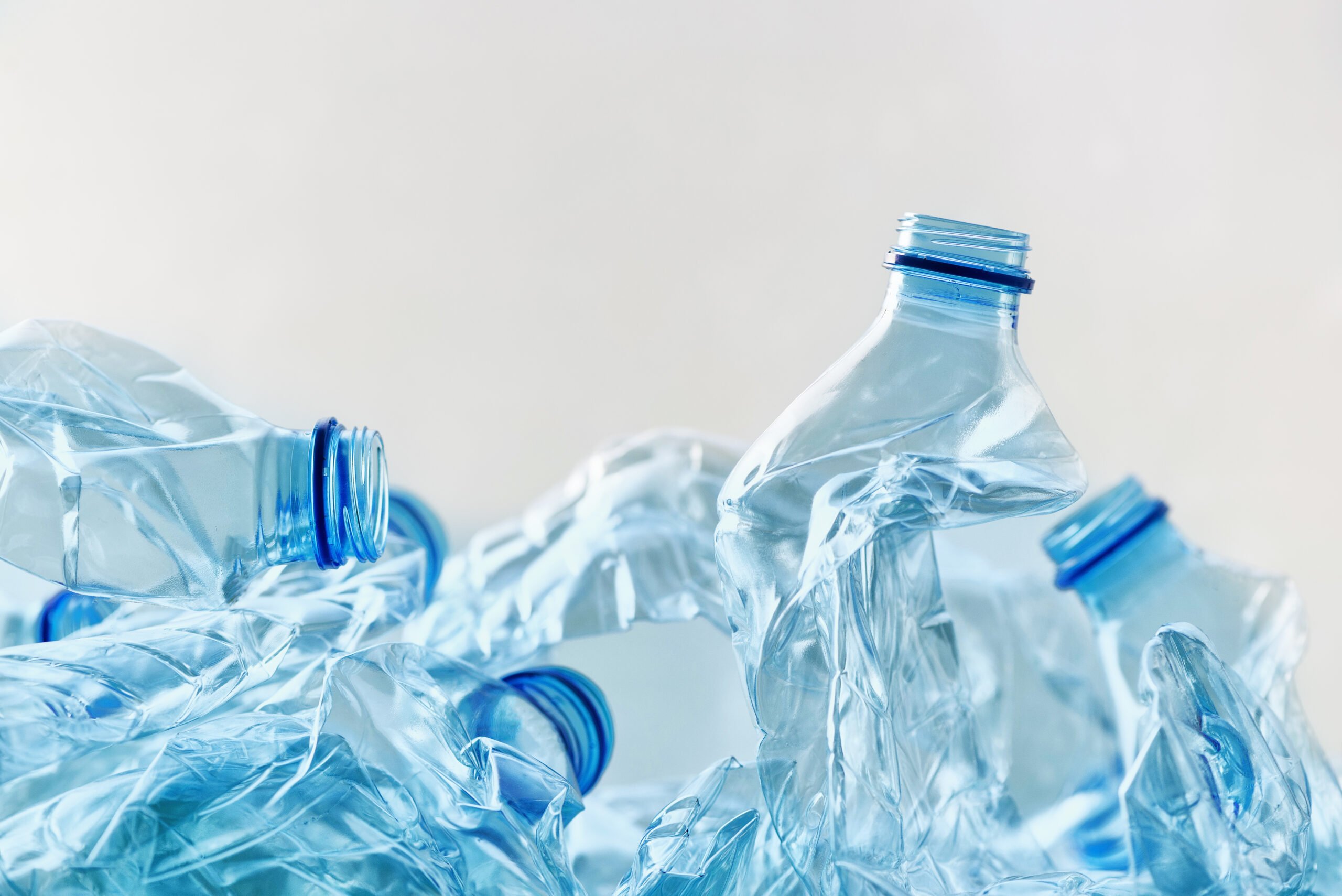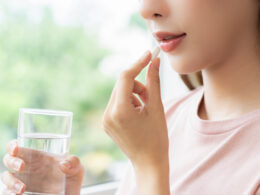In Victorian England, arsenic was in high demand for its ability to produce vivid green, and very en vogue, wallpaper. While the dangers of arsenic were relatively well known at the time, these concerns were largely ignored on the premise that no one was eating the wallpaper; people were just exposed to it via the air. Over time, as people fell ill and died, the theory that the arsenic in wallpaper could be toxic to humans was taken up by newspapers and media. After significant public scrutiny, wallpaper manufacturers eventually turned to other material for their dyes.
As with other formerly-widespread use of harmful substances, including lead pipes, uranium in ceramic glazes, and mercury baths, it’s easy to shake our heads at the idea of wallpapering a house with arsenic. However, could this be how future historians look at our dependence on plastic? Will they wonder how we could use plastic to create a vast array of materials and fail to ask how it could impact our health? Recent studies on how plastic interacts with our bodies’ hormones point to this possibility, particularly given the increasing prevalence of certain reproductive issues, like the decrease in sperm counts worldwide.
What are endocrine disruptors?
An endocrine disruptor is a substance, natural or synthetic, that changes how hormones work in the body. These chemicals are often organic (meaning carbon-based), with a similar structure to the hormones our bodies produce. Because hormones have so many effects on the body, this means that endocrine disruptors can have a wide range of negative effects, from effects on puberty and fertility to decreased immune function, to cancer, and more.
One example of a natural endocrine disruptor is soy, which has a chemical structure similar to estrogen and is known to have both pro-estrogen and estrogen blocking effects in the body. A common synthetic estrogen-like endocrine disruptor is bisphenol A (BPA), which is known to be harmful and banned in certain products like baby bottles.
Learning about endocrine disruptors and their effects can help you make informed choices about the products you buy and use, although it may be impossible to avoid endocrine disruptors altogether due to their widespread use.
Plastics themselves, not just plastic additives, may be endocrine disruptors
Much of the national conversation around endocrine disruptors has focused on chemicals that are added to plastic to improve its quality. Additives like BPA and phthalates are linked to preterm birth, disorders of the male reproductive system, decreased fertility, and have recently been implicated in the development of Type-II diabetes.
However, plastic itself is an organic compound, and recent evidence suggests that plastic may have a greater effect on our hormones than previously thought [1].
Research study finds inhaled plastic particles impact estrogen, other body systems
Researchers at Rutgers University exposed female rats in heat (the time rats are fertile and sexually receptive) to a single exposure of nylon powder. They did this to study the effects of inhaled plastic on cardiovascular health, inflammation, and reproductive hormones [1]. This study was specifically set up to address the fact that micro and nano particles (MNPs), super-fine plastic particles created as plastics break down, are found in water, air, and samples of human tissue. Nylon was specifically chosen because it is made without BPA or phthalates, and was believed not to have any effects on the endocrine system at the time of the study. (Of note, nylon may bring to mind an image of pantyhose. In reality, nylon is actually fairly ubiquitous. It is found in toothbrushes, fibers, molded plastics, and is used in food packaging.)
How plastics might hurt our hormonal health
How might plastics be endocrine disruptors? This study found that inhaled MNPs created an average of a 14% increase in blood pressure, impaired vasodilation (blood vessel dilation) and endothelial function (function of the inner lining of blood vessels) in the uterus [1]. The nylon MNPs also resulted in elevated levels of IL-6 (interleukin-6, an inflammation marker), and a decrease in 17β-estradiol (a form of estrogen).
The researchers theorized that the decrease in estrogen observed in the study may explain the increase in systemic (body-wide) inflammation evidenced by the abnormal IL-6 levels. In a similar way,when naturally-occurring estrogen is suppressed by synthetic estrogen while on birth control, the body starts to show signs of chronic stress.
Study limitations
While these results are concerning, the researchers note that it is difficult to apply their results to real-world exposure rates because it is still difficult to detect and measure nano plastics. Additionally, the MNPs created for this study were sphere-shaped. But plastics normally break down into fibers and fragments rather than perfect spheres. For this reason, plastic retention in human tissue may be different in the real-world than in this study. Until more is known about MNPs, it will be difficult to assess what their impact on the average person may be.
How to avoid overwhelm in a plastic-filled world
If you’ve started thinking about all the times you come into contact with plastic in your day-to-day life, try not to panic. Anything that you do to limit your exposure to endocrine disruptors can help make a difference. Furthermore, as non-toxic and plastic-free alternatives become more popular, changing out some of your most-used household products continues to become easier and less expensive than it used to be. Check out our guide to avoiding other endocrine disruptors here.
Plastic swaps:
- Natural fibers like cotton and linen instead of polyester or nylon. If this means getting a whole new wardrobe or linen cabinet, you can start with items that get heavy use, such as bed sheets or an all-linen baby carrier.
- Using glass or stainless steel for food storage. Limiting the amount of plastic you use in your kitchen will limit the amount of plastic you ingest. Furthermore, washing your produce and washing your hands before you eat can help to wash away residue from other potential endocrine disruptors in packaging and pesticides.
- Opt for kid toys with natural materials. Wooden toys are making a comeback, but plastic is still the material of choice for most manufacturers. When prioritizing how to limit plastic toys, focus on toys that will get heavy use or that will spend a lot of time in the mouth, like lovies and teethers.
- Thoughtful home remodeling and styling. If you are considering getting new flooring for your home, consider options other than vinyl, which (besides being plastic) is often made with phthalates. When choosing furniture and textiles, natural fibers, fabrics, and materials are best.
While more research is needed to better understand how widespread plastic use impacts our health in addition to impacting the environment, the good news is that making a few plastic-free swaps can both help protect your family’s health and create more sustainable, green habits!
References:
[1] Cary, C.M., Seymore, T.N., Singh, D. et al. Single inhalation exposure to polyamide micro and nanoplastic particles impairs vascular dilation without generating pulmonary inflammation in virgin female Sprague Dawley rats. Part Fibre Toxicol 20, 16 (2023). https://doi.org/10.1186/s12989-023-00525-xAdditional Reading:
Protecting boys and men from endocrine disruptors
Simple ways to protect your health and fertility from endocrine disruptors
3 simple tips to limit endocrine disruptors and balance hormones naturally
Having “green sex” might be the best thing you can do for the environment











